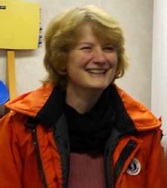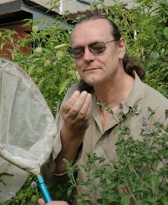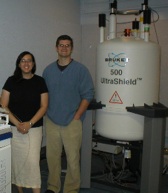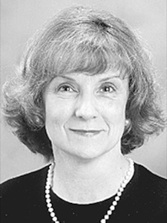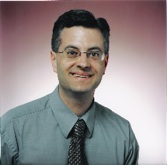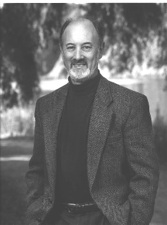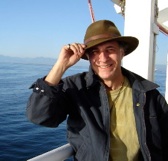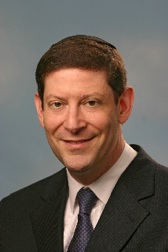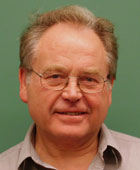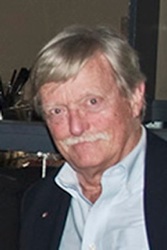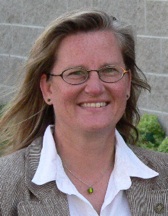


The Fall 2008 Lectures
Thursday, October 2, 2008 MISSISSAUGA
The Phoenix Mission: A Maple Leaf on Mars
Peter A. Taylor, B.Sc., Ph.D., Centre for Research in Earth and Space Science, York University
The Phoenix lander touched down safely just north of Mars’ Arctic Circle on May 25, 2008. An important component of this NASA Scout mission is a Meteorological Station (MET), constructed by MDA in Brampton. The Canadian scientific team, based at York University, has been responsible for design and operation of the meteorological package during the Mission, and members of the team have spent the summer at the Science Operations Centre in Tucson, Arizona, planning the daily operations of the MET station and analyzing the data.
Dr. Taylor will describe the mission, Canada’s contributions, and the initial findings from the data.
Sunday, October 19, 2008 TORONTO
Deep Ocean Discoveries: Fire, Ice and Life on the Seafloor
Verena Tunnicliffe, Ph.D., Department of Biology and Earth and Ocean Sciences, University of Victoria; Canada Research Chair and Director of the VENUS Project
Deep ocean animals thrive in its extreme conditions - hot water, liquid carbon dioxide, low oxygen and erupting volcanoes. A recent technological advance, VENUS, an underwater cabled laboratory, allows an array of instruments to run on the seafloor near Victoria and Vancouver. VENUS has helped us to push exploration deeper and begin to understand animal adaptations to the challenges of the physical, chemical and geologic world.
Sunday, October 26, 2008 TORONTO
Losing the Buzz: The Disappearance of Bees and Why It Matters
Laurence Packer, Ph.D., Department of Biology, York University
Bees are the most important pollinators on the planet. There are 20,000 species - 800 of which are found in Canada. Not only are they responsible for 30% of the food we eat, they are excellent indicators of the quality of terrestrial environments. Everything from the tomatoes in your urban garden to trees in the forest needs bees. As bee populations decline, impacts will be felt throughout the food chain and in numerous ecosystems.
Sunday, November 2, 2008 TORONTO
Using Big Magnets to Understand Environmental Contamination
Myrna Simpson, Ph.D., and André Simpson, Ph.D., Department of Physical and Environmental Sciences, U of T at Scarborough
Canadians have ben left with a legacy of contaminated land. Continued use of various chemicals in daily life has resulted in soil contamination in Canada and around the world. The development of nuclear magnetic resonance approaches has helped us to understand how chemicals bind to soil. We developed novel, cutting-edge studies to determine the nature of soil organic matter and how it interacts with problematic environmental chemicals. Understanding how chemicals bind will help us to improve cleanup methods for contaminated soils.
Thursday, November 6, 1008 MISSISSAUGA
Watching Brains Think: Brain Imaging, Face Recognition and Deception
Hugh R. Wilson, Ph.D., ORDCF Professor of Spatial and Computational Vision, York University and Director, Centre for Vision Research
Brain cells require more energy than any other individual cells in the human body (thinking really IS hard work). Because of the energy requirement, blood flow increases in areas of the brain where cells are most active. Brain scanners can now detect these changes safely from outside the head, helping to determine which brain areas are active during different mental tasks, shedding light on a wide range of questions: how do we recognize faces? Why are some people face-blind even though they have normal vision? Can we detect psychopaths by watching their brain activity? Can we determine whether a person is lying? Can brain imaging help to identify terrorists? Tell how you will vote in the next election? Determine which advertisements are most effective?
This talk will address some of these perplexing questions, clarify how brain imaging really works, consider the ethical issues raises by using brain imaging to “read minds”, and describe the exciting advancements in computer modelling that brain imaging is enabling.
Sunday, November 9, 2008 TORONTO
Coping With Impossible Problems
Margaret Wright, Ph.D., Department of Computer Science, Courant Institute of Mathematical Sciences, New York University
Impossible problems come up all the time. Unfortunately, they need to be solved - often quickly! What’s a mathematician to do?
This lecture is cosponsored by the Fields Institute for Research in Mathematical Sciences.
Sunday, November 16, 2008 TORONTO
How Semiconductor Grass Will Solve the Energy Crisis
Ray Lapierre, Ph.D., Department of Engineering Physics, McMaster University
Solar cells that convert sunlight into electricity are still too expensive and inefficient to compete with fossil fuels and nuclear energy. Now, however, nanotechnology is being used to produce low cost and highly efficient solar cells. Solar cells are being fabricated using tiny “artificial grass” thousands of times smaller than a human hair. Conventional solar cells and their limitations, and international efforts to improve solar cells with nanotechnology, will be discussed.
Sunday, November 23, 2008 TORONTO
Managing Without Growth: Slower by Design, not Disaster
Peter Victor, Ph.D., Department of Environmental Studies, York University; Past President, RCI
Economic growth is the over-arching policy objective of governments worldwide. Yet its long-term viability is increasingly questioned because of environmental impacts and impending and actual shortages of energy and material resources. Furthermore, rising incomes in rich countries bear little relation to gains in happiness and well-being. Growth has not eliminated poverty, brought full employment or protected the environment. Using a simulation model of the Canadian economy, we will consider whether full employment, an end to poverty, dramatic reductions in greenhouse gas emissions and maintaining fiscal balance is possible without economic growth.
Sunday, November 30, 2008
Fun with Science - especially for kids 6 - 12
Russell Zeid, RCI Council member, educator
A lively hour that puts the “fizz” back in physics! Why do things do what they do? Discover facts, history and fiction around the physical sciences. Fun-filled hour for kids aged 6 to 12. Doors open at 2:00 p.m. A free event followed by complimentary refreshments for those in attendance. No reserved seats.
Thursday, December 4, 2008 MISSISSAUGA
The Science of Ice Wine: Extreme Winemaking
Debra Inglis, B.Sc., Ph.D., Associate Professor of Biological Sciences/Yeast Biotechnology, Cool Climate Oenology and Viticulture Institute (CCOVI), Brock University
Ice wine is a unique beverage. That “uniqueness” comes at the price of pushing winemakers to their wits’ ends. In fact, some winemakers have termed the gruelling process “Extreme Winemaking”. From draping the crop in miles of awkward netting to thwart bird attacks, to picking in the middle of bone-chilling nights (including holidays), to the irksome stickiness on everything it contacts in your winery, making ice wine can be a ruthless pursuit. And don’t think for a minute that the sticky stuff eases up when it comes to fermenting it. No chance! This is when it puts yeast through the microbial equivalent of Marine Corps basic training.
Sunday, December 14, 2008 TORONTO
THE STOICHEFF LECTURE
Optical Communications: Innovations (and their needs) abound
Alan Willner, Ph.D., Ming Hseh Department of Electrical Engineering, University of Southern California
Optical fibre communications have been a key enabler of the fantastic growth in nearly all forms of global communications. One tiny glass fibre can accommodate more than 20,000 Gbits per second of information traffic, the equivalent of many millions of simultaneous phone calls or a million simultaneous high-speed internet connections. Increasing demand for capacity by different types of users has driven significant innovation. Recent technical achievements in advanced data-modulation formats, high-performance integrated optics, and work to overcome non-idealities on the optical fibre itself promise a robust, reconfigurable system with greater capacity and flexibility.
(For more information on the Stoicheff Lectures, go HERE)
We thank the University of Toronto and
the Mississauga Central Library for their support








RCI Home
